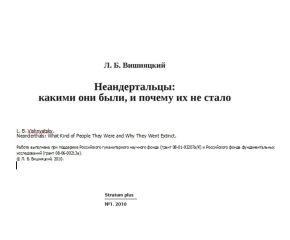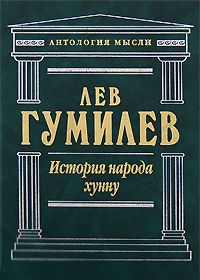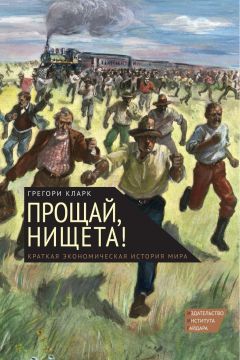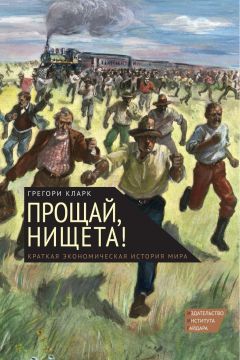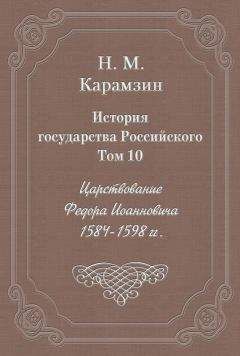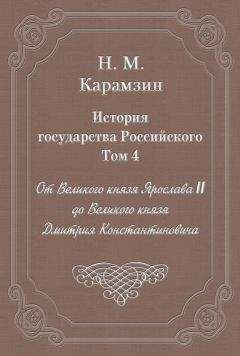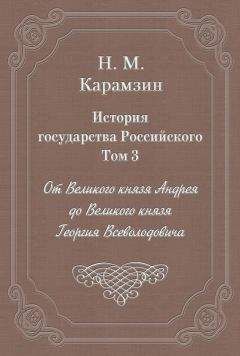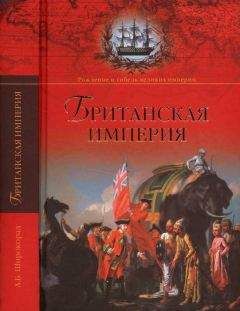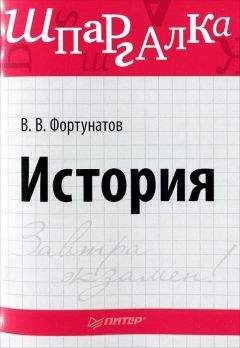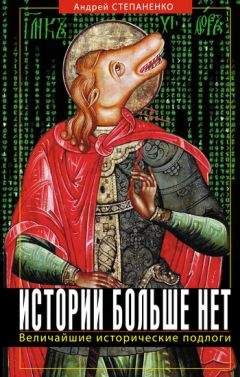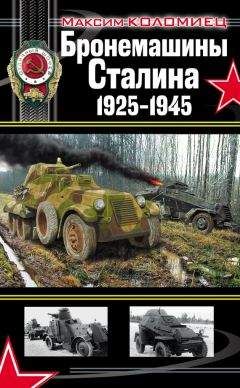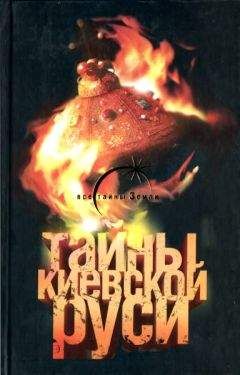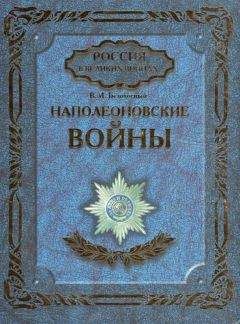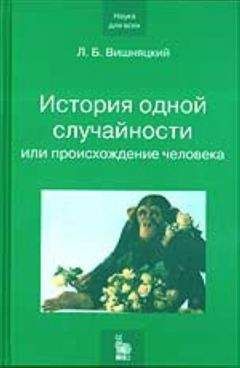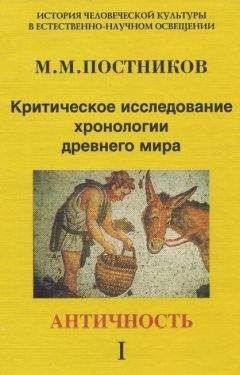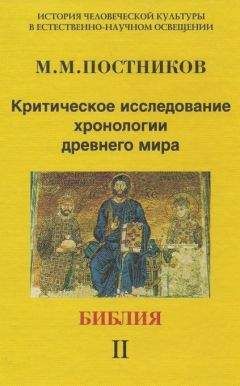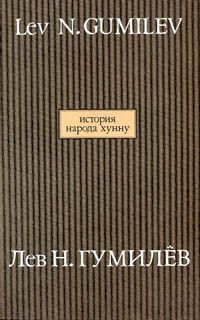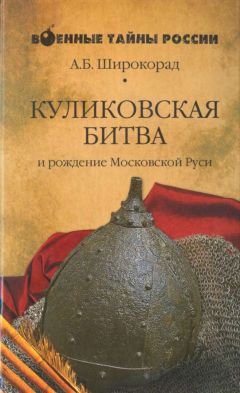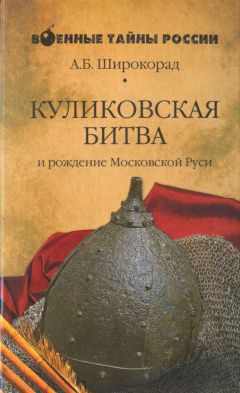Леонид Вишняцкий - Неандертальцы: история несостоявшегося человечества
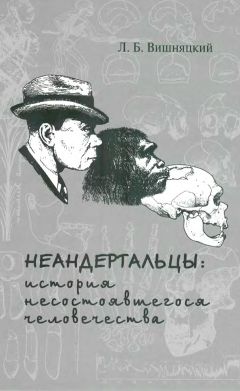
Скачивание начинается... Если скачивание не началось автоматически, пожалуйста нажмите на эту ссылку.
Жалоба
Напишите нам, и мы в срочном порядке примем меры.
Описание книги "Неандертальцы: история несостоявшегося человечества"
Описание и краткое содержание "Неандертальцы: история несостоявшегося человечества" читать бесплатно онлайн.
Неандертальцы не были нашими прямыми предками, но, тем не менее, они наши ближайшие родственники, и у нас с ними очень много общего. Называть их тупиковой ветвью эволюции, по мнению автора этой книги, столь же неверно, как неверно применять этот эпитет по отношению, скажем, к коренному населению Тасмании и другим первобытным популяциям людей, уничтоженным в результате европейской колонизации. Скорее, неандертальцев следует считать "дублерами" гомо сапиенс, запасным вариантом антропогенеза. Почему же история выбрала нас, а не их? Как происходил этот выбор? Что сыграло в нем решающую роль? Был ли он предопределен заранее или зависел больше от привходящих и потому во многом случайных обстоятельств? Автор рассматривает эти и многие другие вопросы, попутно суммируя и в доступной для неспециалистов форме излагая то, что известно сейчас о происхождении и эволюционной истории неандертальцев, их умственных и языковых способностях, материальной и зарождавшейся духовной культуре, о динамике их расселения и причинах вымирания. По каждой из перечисленных тем учтены наиболее интересные и важные сведения, имевшиеся в распоряжении палеоантропологии, археологии и смежных с ними наук на середину 2010 г. Книга адресована всем, кого занимает древнейшее прошлое человечества - от академиков до студентов и школьников старших классов.
Martinez /., Quam R., Arsuaga J. L., Lorenzo C., GraciaA., Carretero J. M., Rosa M.,Jarabo P. Approche paleontologique de revolution du langage: un etat des lieux // L'Anthropologic. 2009. N 113. P. 255-264.
Maslin M. Quaternary climate transitions and cycles // V. Gornitz (ed). Encyclopedia of Paleoclimatology and Ancient Environments. Dordrecht: Springer, 2009. P. 841-855.
Mazza P. P. A., Martini F., Sala В., Magi M, Colombini M. P., Giachi G., Landucci F., Lemorini C., Modugno F., Ribechini E. A new Palaeolithic discovery: tarhafted stone tools in a European Mid-Pleistocene bone-bearing bed // JAS. 2006. N 33. P.1310-1318.
McBrearty S., Brooks A. S. The revolution that wasn't: a new interpretation of the origin of modern human behavior // JHE. 2000. N 39. P. 453-563.
McDaniel M. A. Big-brained people are smarter: A meta-analysis of the relationship between in vivo brain volume and intelligence // Intelligence. 2005. N 33. P. 337- 346.
McDougall I., Brown F. H., Fleagle J. G. Sapropels and the age of hominins Ото I and II, Kibish, Ethiopia // JHE. 2008. N 55. P. 409-420.
Mellars P. The Neanderthal Legacy. An Archaeological Perspective from Western Europe. Princeton: Princeton University Press, 1996a.
Mellars P. Symbolism, language, and the Neanderthal mind // K. R. Gibson, P. Mellars (eds). Modelling the Early Human Mind. Cambridge: Cambridge University Press, 1996b. P. 15-32.
Mellars P. The impact of climatic changes on the demography of late Neandertal and early anatomically modern populations in Europe // T. Akazawa, K. Aoki, O. Bar- Yosef (eds). Neandertals and Modern Humans in Western Asia. New York: Plenum Press, 1998. P. 493-507.
Mellars P. Going East: New genetic and archaeological perspectives on the modern human colonization of Eurasia // Science. 2006. N 313. P. 796-800.
Milliken S. Neanderthals, anatomically modern humans, and 'modern human behaviour' in Italy // OJA. 2007. N 26. P. 331-358.
Milner R. Cranial capacity // The Encyclopedia of Evolution: Humanity's Search For Its Origins. New York: Holt, 1990.
Mithen S. The Prehistory of the Mind. London: Thames and Hudson, 1996.
Mithen S. The Singing Neanderthals: the Origins of Music, Language, Mind and Body. London: Weidenfeld and Nicholson, 2005.
Mithen S. General intellectual ability // S. W. Gangestad, J. A. Simpson (eds). The Evolution of Mind: Fundamental Questions and Controversies. New York/London: The Guilford Press, 2007. P. 319-324.
Moser S. The visual language of archaeology: A case study of the Neanderthals // Antiquity. 1992. N 66. P. 831-44.
Narr К J., Uslar R. von. J. C. Fuhlrott und der Neandertaler// K. Tackenberg (Her.). Der neandertaler und seine Umwelt. Bonn: Rudolf Habelt Verlag, 1956. P. 9-31.
Niewoehner W. A. Neanderthal hands in their proper perspective // K. Harvati, T. Harrison (eds). Neanderthals Revisited: New Approaches and Perspectives. Dordrecht: Springer, 2006. P. 157-190.
Noonan J. P., Coop G., Kudaravalli S., Smith D., Krause У., Alessi У., Chen F., Piatt D.,Paabo S.,Pritchard J. K, Rubin E. M. Sequencing and analysis of Neanderthal genomic DNA // Science. 2006. N 314. P. 1113-1118.
О'Cornell У. F. How did modern humans displace Neanderthals? Insights from hunter-gatherer ethnography and archaeology // N. Conard (ed). Neanderthals and Modern Humans Meet? Tubingen: Kerns Verlag, 2006. P. 43-64.
Oliva M Die Herkunft des Szeletien im Likhte neuer Funde von Jeserany // Casopis Moravskeho Muzea v Brne, 1979. N 64. P. 45-78.
Oliva M. Pointes foliacees et technique levallois dans le passage paleolithique moyen/paleolithique superieur en Europe centrale // J. Kozlowski (ed). L'Homme de Neandertal. Vol. 8. La Mutation. Liege: ERAUL, 1988. P. 125-131.
Onac B. P., Viehmann /., Lundberg J., Lauritzen S.-E., Stringer C., Popifa V. U-Th ages constraining the Neanderthal footprint at Vartop Cave, Romania // QSR. 2005. N24. P. 1151-1157.
Oppenheimer S. The great arc of dispersal of modern humans: Africa to Australia // QI.N202. P. 2-13.
Orlando L., Darlu P., Toussaint M, Bonjean D., Otte M, Hanni C. Revisiting Neandertal diversity with a 100,000 year old mtDNA sequence // CB. 2006. N 16. P. 400-402.
Orschiedt J. Der Fall Krapina — neue Ergebnisse zur Frage van Kannibalismus beim Neandertaler // Quartar. 2008. N 55. P. 63-81.
Patou-Mathis M. Neanderthal subsistence behaviours in Europe // IJO. 2000. N 10. P. 379-395.
PatteE. LesNeandertaliens: anatomie, physiologie, comparasions. Paris: Masson, 1955.
Paunescu A. Le Paleolithique et le Mesolithique de Roumanie (un bref aper?u) // L'Anthropologic. 1989. N 93. P. 123-58.
Pearson J. A. Hunters, fishers and scavengers: a review of the isotope evidence for Neanderthal diet // BF 2, article 2. 2007.
Pearson О. M. Has the combination of genetic and fossil evidence solved the riddle of modern human origins // EA. 2004. N 13. P. 145-159.
Pearson О. M, Cordero R. M, Busby A. M. How different were Neanderthals' habitual activities? A comparative analysis with diverse groups of recent humans // K. Harvati and T. Harrison (eds). Neanderthals Revisited: New Approaches and Perspectives. Dordrecht: Springer, 2006. P. 135-156.
Pennington R. Hunter-gatherer demography // C. Panter-Brick, R. H. Layton, P. Rowley-Conwy (eds). Hunter-Gatherers. An Interdisciplinary Perspective. Cambridge: Cambridge University Press, 2001. P. 170-204.
Pennisi E. Tales of a prehistoric human genome // Science. 2009. N 323. P. 866- 871.
Perez-Perez A., Espurz V., Bermudez de Castro J. M., Lumley M. A. deTurbon D. Non-occlusal dental microwear variability in a sample of Middle and Late Pleistocene human populations from Europe and the Near East // JHE. 2003. N 44. P. 497-513.
Pettitt P. В. Disappearing from the world: an archaeological perspective on Neanderthal extinction // OJA. 1999. N 18. P. 217-40.
Pettitt P. B. Neanderthal lifecycles: developmental and social phases in the lives of the last archaics // WA. 2000. N 31. P. 351-366.
Pettitt P. В. The Neanderthal dead: exploring mortuary variability in Middle Palaeolithic Eurasia // BF 1, article 4. 2002.
Plavcan J. M. Sexual dimorphism in primate evolution// YPA. 2001. N 44. P. 25-53.
Ponce de Leon M. S., Golovanova L., Doronichev K, Romanova G.,Akazawa Т., Kondo O., Ishida H, Zollikofer С. P. E. Neanderthal brain size at birth provides insights into the evolution of human life history // PNAS. 2008. N 16. P. 13764-13768.
RahmstorfS. Ocean circulation and climate during the past 120,000 years //Nature. 2002. N419. P. 207-214.
Rak Y. The Neanderthal: A new look at an old face // JHE. 1986. N 15. P. 151-164.
Rak 7., GinzburgA., Geffen E. Does Homo neanderthalensis play a role in modern human ancestry? The mandibular evidence // AJPA. 2002. N 119. P. 199-204.
Ramirez Rozzi F. V., d'Errico F., Vanhaeren M, Grootes P. M, Kerautret В., Dujardin V. Cutmarked human remains bearing Neandertal features and modern human remains associated with the Aurignacian at Les Rois // JAnS. 2009. N 87. P. 1-30.
Rampino M. R., Self S. Volcanic winter and accelerated glaciation following the Toba super-eruption //Nature. 1992. N 359. P. 50-52.
Rhodes J. A., Churchill S. E. Throwing in the Middle and Upper Paleolithic: inferences from an analysis of humeral retroversion // JHE. 2009. N 56. P. 1-10.
Richards M. P. Diet shift at the Middle/Upper Palaeolithic transition in Europe? The stable isotope evidence // W. Roebroeks (ed). Guts and Brains. An Integrative
Approach to the Hominin Record. Leiden: Leiden University Press, 2007. P. 221- 234.
Richards M. P., Trinkaus E. Isotopic evidence for the diets of European Neanderthals and early modern humans // PNAS. 2009. N 16. P. 16034-16039.
Richards M, Harvati K., Grimes V., Smith C., Smith Г., Hublin J.-J., Karkanas P., Panagopoulou E. Strontium isotope evidence of Neanderthal mobility at the site of Lakonis, Greece using laser-ablation PIMMS // JHE. 2008a. N 35. P. 1251-1256.
Richards M. PTaylor G., Steele Г., McPherron S. PSoressi M, Jaubert J., Orschiedt У., Mallye J. В., Rendu W., Hublin J.-J. Isotopic dietary analysis of a Neanderthal and associated fauna from the site of Jonzac (Charente-Maritime), France // JHE. 2008b. N 55. P. 179-185.
Riel-Salvatore J., Clark G. A. Grave markers. Middle and Early Upper Paleolithic burials and the use of chronotypology in contemporary Paleolithic research // CAn. 2001. N 42. P. 449-479.
Rightmire G. P. Human evolution in the Middle Pleistocene: the role of Homo heidelbergensis II EA. 1998. N 6. P. 218-227.
Rightmire G. P. Homo in the Middle Pleistocene: hypodigms, variation, and species recognition // EA. 2008. N 17. P. 8-21.
Rightmire G. P. Middle and later Pleistocene hominins in Africa and Southwest Asia // PNAS. 2009. N 106. P. 16046-16050.
Robson S. L., Wood B. Hominin life history: reconstruction and evolution // JA. 2008. N212. P. 394-425.
Roebroeks W. Time for the Middle to Upper Paleolithic transition in Europe // JHE. 2008. N55. P. 918-926.
Rogers A. R., litis D., Wooding S. Genetic variation at the MC1R locus and the time since loss of human body hair // CAn. 2004. N 45. P. 105-108.
Rolland N. Was the emergence of home bases and domestic fire a punctuated event? A review of the Middle Pleistocene record in Eurasia // Asian Perspectives.
2004. N43. P. 248-280.
Rosas A. Occurrence of Neanderthal features in mandibles from the Atapuerca-SH site // AJPA. 2001. N 114. P. 74-91.
Rosas AВ astir M, Martinez-Maza C., Garcia-Tabernero ALalueza-Fox C. Inquiries into Neanderthal craniofacial development and evolution: "accretion" versus organismic" models // K. Harvati and T. Harrison (eds). Neanderthals Revisited: New Approaches and Perspectives. Dordrecht: Springer, 2006. P. 37-69.
Rosen A. M. Middle Paleolithic plant exploitation: the microbotanical evidence // D. O. Henry (ed). Neanderthals in the Levant. Behavioral Organization and the Beginnings of Human Modernity. London/New York: Continuum, 2003. P. 156- 171.
RoucouxK. H.,AbreuL. de, ShackletonN. J., Tzedakis P. C. The response ofNW Iberian vegetation to North Atlantic climate oscillations during the last 65 kyr // QSR.
2005. N24. P. 1637-1653.
RoyerD. F., Lockwood C. A., Scott J. E., GrineF. E. Size variation in early human mandibles and molars from Klasies River, South Africa: Comparison with other
Middle and Late Pleistocene assemblages and with modern humans // AJPA. 2009. N 140. P. 312-323.
Rushton J. P. Cranial capacity related to sex, rank, and race in a stratified random sample of 6,325 U. S. military personnel // Intelligence. 1992. N 16. P. 401-413.
Santa Luca A. P. A re-examination of presumed Neanderthal-like fossils // JHE. 1978. N7. P. 619-636.
Sawyer G. У., Maley B. Neanderthal reconstructed // AR. 2005. N 283B. P. 23-31.
Sawyer R. J. Hominids. New York: Tom Doherty Associates, 2002.
Schaaffhausen H. Funde in der Sipkahohle in Mahren // Sonderbericht der Niederrheinischen Gesellschaft fur Natur- und Heilkunde. 1880. P. 260-264.
Schillaci M. A., Froehlich J. W. Nonhuman primate hybridization and the taxonomic status of Neanderthals//AJPA. 2001. N 116. P. 157-166.
SchickK. D., Toth N. Making Silent Stones Speak. Human Evolution and the Dawn of Technology. New York: Touchstone, 1994.
Schmitt D., Churchill S. E., Hylander W. L. Experimental evidence concerning spear use in Neandertals and early modern humans // JAS. 2003. N 30. P. 103— 114.
Schmitz R. W. The discovery of fossil man in the 18th and 19th century// R. W. Schmitz (ed). Neanderthal 1856-2006. Mainz am Rhein: Verlag Philipp von Zaibern, 2006a. P. 9-16.
Schmitz R. W. A romantic valley and a discovery that has changed the world // R. W. Schmitz (ed). Neanderthal 1856-2006. Mainz am Rhein: Verlag Philipp von Zaibern, 2006b. P. 35-44.
Schrenk F., Muller S. The Neanderthals. New York: Routledge, 2009. (Transl. from 2005 Germ, ed.)
Подписывайтесь на наши страницы в социальных сетях.
Будьте в курсе последних книжных новинок, комментируйте, обсуждайте. Мы ждём Вас!
Похожие книги на "Неандертальцы: история несостоявшегося человечества"
Книги похожие на "Неандертальцы: история несостоявшегося человечества" читать онлайн или скачать бесплатно полные версии.
Мы рекомендуем Вам зарегистрироваться либо войти на сайт под своим именем.
Отзывы о "Леонид Вишняцкий - Неандертальцы: история несостоявшегося человечества"
Отзывы читателей о книге "Неандертальцы: история несостоявшегося человечества", комментарии и мнения людей о произведении.





